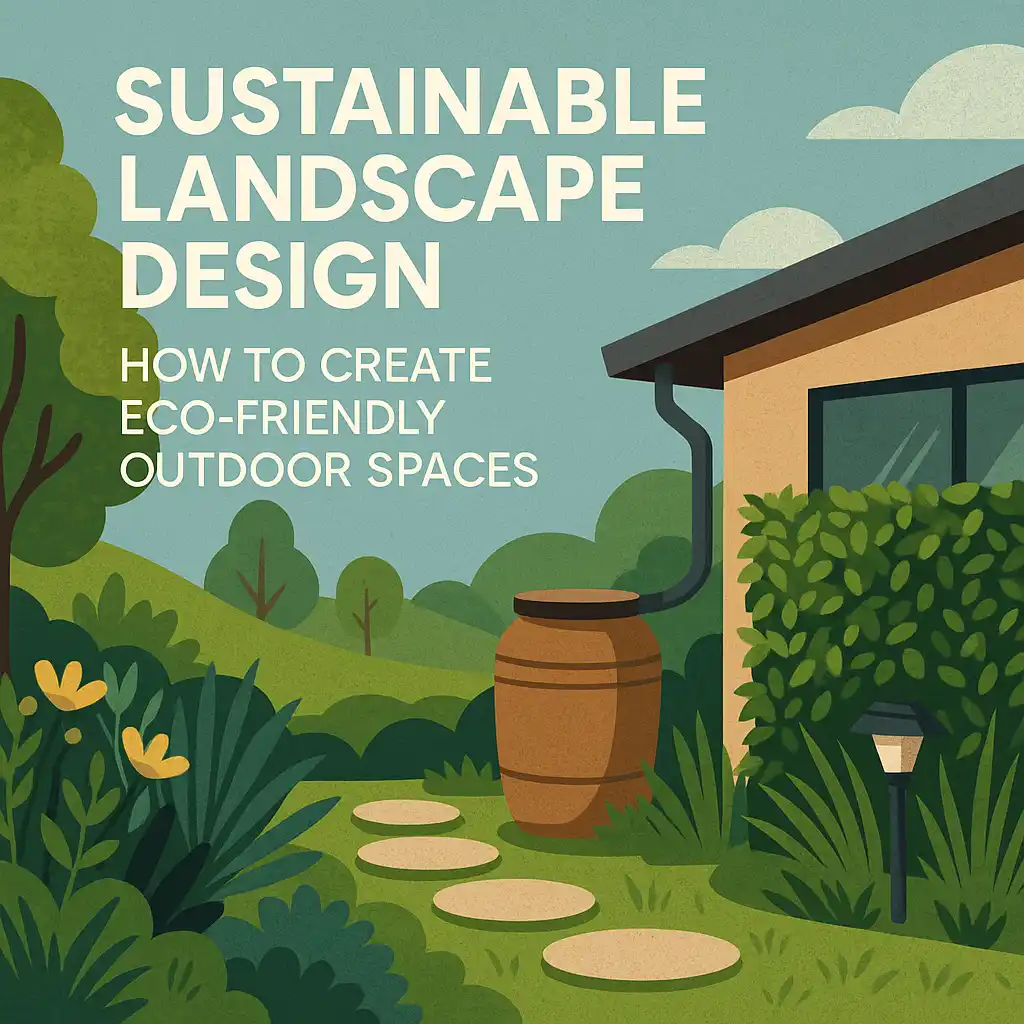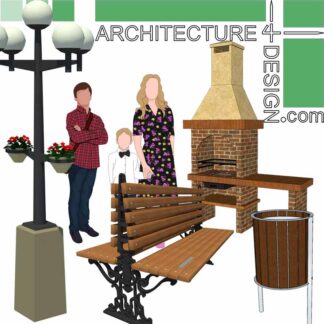
“Imagine a garden that not only looks beautiful—but also restores the environment, supports local biodiversity, and uses minimal resources.”
This is the essence of sustainable landscape design.
As climate change, resource depletion, and urban expansion reshape our world, the role of landscape design is evolving. Today, it’s no longer just about aesthetics; it’s about integrating natural systems with human needs, crafting spaces that heal rather than harm, and guiding people back into a more balanced relationship with the environment.
What Is Sustainable Landscape Design?
Sustainable landscape design is the practice of creating outdoor environments that conserve resources, reduce environmental impact, and promote long-term ecological health. It’s a holistic approach, rooted in science, culture, and ethics, that considers not only how spaces look, but how they function, age, and regenerate.
Why Does It Matter?
A well-designed sustainable landscape:
- Reduces water and energy use
- Improves soil health and air quality
- Enhances local biodiversity
- Supports physical and mental well-being
- Educates and empowers communities
- Saves money in the long run through low-maintenance design
Whether you’re designing a backyard, a public park, or a commercial site, sustainable practices help transform each space into a resilient, living system.
Six Dimensions of Sustainable Landscape Design
Experts today define landscape sustainability across six interlinked dimensions:
1. Ecology & Environment
- Use native plants to reduce irrigation and support pollinators
- Avoid excessive clearing and hardscaping
- Embrace green roofs, permeable pavements, and rain gardens
- Reduce fossil fuel use during construction and maintenance
2. Economy
- Invest in low-maintenance, long-life materials
- Source locally to reduce transportation emissions and cost
- Use passive energy strategies like natural lighting and shading
- Promote self-sufficient systems (e.g., solar irrigation, composting)
3. Social Equity
- Ensure accessibility and inclusivity in design
- Prioritize community involvement in planning
- Avoid placing environmental burdens on marginalized groups
- Respect cultural landscapes and traditional knowledge
4. Aesthetics
- Create spaces that are not just functional but emotionally resonant
- Inspire care for the land through beauty, harmony, and sensory richness
- Connect human experience with the rhythms of nature
5. Experience & Perception
- Design for multi-sensory interaction—sight, sound, texture, and smell
- Foster mindfulness, reflection, and stewardship
- Make sustainability visible: display rainwater harvesting, native planting, or wildlife habitats
6. Ethics
- Respect future generations by conserving resources today
- Design with humility: intervene only where truly needed
- Value biodiversity and non-human life as part of the design equation
From Principles to Practice: Real Strategies
To translate these values into tangible design outcomes, sustainable landscapes often include:
- Rainwater harvesting systems for irrigation
- Minimal lawns or alternatives like clover or native grasses
- Native and drought-tolerant vegetation
- Composting stations to recycle green waste
- Green roofs and walls that insulate and filter air
- Locally sourced and recycled materials
- Passive solar design for shade and thermal comfort
- Public seating and pathways made with permeable materials
- Habitat zones for pollinators and birds
Rethinking Construction: Less Can Be More
Sometimes the most sustainable choice is not to build. Asking whether an intervention is truly necessary can help avoid unnecessary material use or ecological disruption. Where intervention is needed, minimizing site disturbance and protecting existing ecosystems should always come first.
Design Is a Collaborative Process
Sustainability in landscape design isn’t a solo act. It requires cooperation among designers, engineers, ecologists, local communities, and decision-makers. Participatory and integrative design processes not only improve outcomes they also build shared ownership and environmental awareness.
A Call to Action
“Sustainable landscape design isn’t just a trend—it’s a responsibility.”
As designers, clients, and citizens, we all have a role to play in building outdoor environments that are both beautiful and regenerative. With thoughtful planning and a commitment to long-term impact, we can transform our landscapes from isolated patches of green to interconnected systems that nurture life.
🔗 Looking to start your sustainable design journey?
Explore tools, case studies, and videos aids on Architecture4Design.com and join our mission to build beauty—sustainably.
Recommended products
-
Landscape design Collection- designs, symbols and details for landscaping (AutoCad DWG file)
$16.00 -
AutoCad 3D blocks for landscape, park and playground design
$12.00 -
Amusement park rides and playground equipment, SketchUp 3D models for landscape design (part 3)
Original price was: $14.00.$7.00Current price is: $7.00. -
Gazebo, pergola, canopy and shelter, SketchUp 3D models for landscape design (part 2)
Original price was: $14.00.$7.00Current price is: $7.00. -
site furniture, SketchUp 3D models for landscape design (part 4)
Original price was: $14.00.$7.00Current price is: $7.00.





